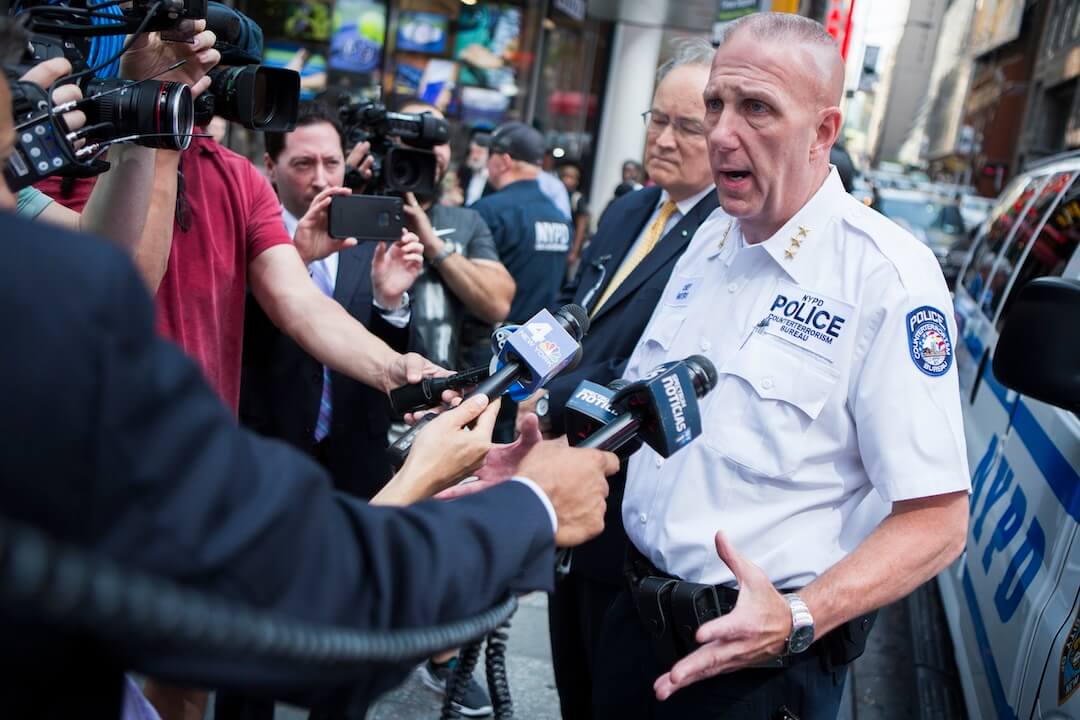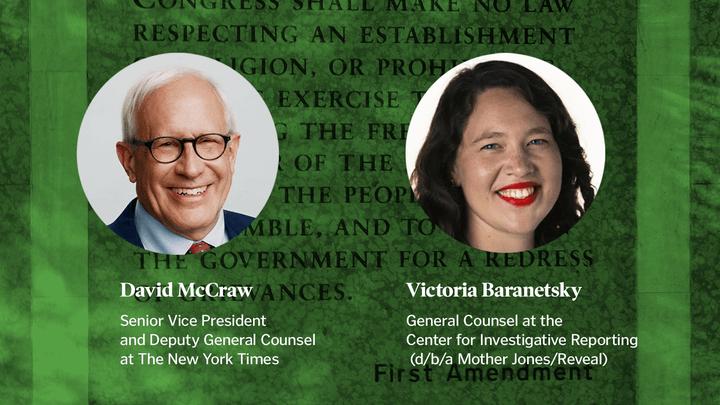A Columbia Journalism Review column by a noted journalism leader argues for the resurrection of the cops beat as a way of improving news coverage of law enforcement.
When news was highly profitable, cops reporters spent much of their time in the press rooms at police stations and the local sheriff’s offices, digging through arrest reports, scrolling over 911 call logs and chatting up detectives in the name of open government. Some newspapers even had their own separate offices in police stations. As newsroom staffs got smaller, in-person visits were replaced by phone calls and the practice of a cops reporter wandering around the secured areas of the police station quietly died, surpassed by a proliferation of daily police press releases.
Joel Simon’s column isn’t naive about the shortcomings of too-cozy relationships between journalists and police officers. But the former head of the Committee to Protect Journalists argues that something is lost in the current state of increasing hostilities between the two.
Simon came to his conclusions as part of his research in his new job as the director of the Journalism Protection Initiative at CUNY’s Craig Newmark Graduate School of Journalism.
“We can’t let the current state of affairs (meaning hostilities between the press and cops) define the way we cover those issues,” he told me.
Although Simon and I agree that journalists have to get better at covering the cops, we disagree on how to go about it. The old system of cops reporting created sensational crime scoops, but it didn’t really help people understand the issues and trends that impact public safety. And the old ways were a liability when it came time to hold law enforcement accountable for abuses. It was difficult to expose a problematic department or even an individual officer when your desk was located in the department you were covering.
Simon argues that current coverage of law enforcement is broken and that reporters building better relationships with police is a good starting point for fixing it. To make his argument, he interviews people like Christina Carrega of Capital B and Phil Trexler of the Marshall Project-Cleveland, who are both now working to bring accountability to the criminal justice system.
Like me, they got their early reporting reps in by roaming the halls of police stations. But times have changed. Even if we could go back to the way we used to do it, we absolutely should not.
The old system did have certain merits. Chief among them was that reporters had more independence to determine which crime stories made the news, rather than relying on often fraught relationships with police press information officers, as many do today.
But the downsides were significant. It was common for reporters to adopt the police perspective, rather than question their version of events.
These days, crime reporting is flawed in a different way. Thinly resourced newsrooms are overly dependent on police press releases. In fact, many releases are barely rewritten before they are published on newsroom websites.
Both the old system and the new system contribute to a misinformed public that constantly believes crime is increasing — whether or not it really is. And both systems do little to help people understand the true state of public safety in their community.
Over the last two years I’ve helped 65 newsrooms replace sensational crime coverage with public safety journalism that better serves the public’s need for information and accountability. And there’s still room for newsrooms that want to join this year’s installment of Transforming Local Crime Reporting Into Public Safety Journalism. Those that have been through the course are seeing payoffs.
The first thing my partner Cheryl Thompson-Morton, director of the Black Media Initiative at CUNY, and I do is help newsrooms identify a clear mission for their public safety coverage. It’s not enough to cover crime just because it’s interesting. That lack of purpose has led to a 700% increase in the number of crime stories in the news over the last three decades, even when the rate of crime is declining.
We spend the rest of the course identifying policies, skills and workflows that help newsrooms get better stories about public safety. Here are just a handful of reforms that newsrooms have enacted:
- Public media outlets traditionally avoid public safety stories, leaving them for commercial media. San Diego’s KPBS, a 2022 program participant, embraced a new approach by identifying the stories that would be interesting to a public media consumer. Then they shared their policy with their audience.
- ABC15 in Phoenix came into the program with a history of doing investigative work. After completing the course, their news director told me the staff got more comfortable with a chilly relationship with law enforcement. In addition to their investigations, they focus on data stories that help their audience understand broader trends, like this story last week on youth violence risk factors.
- King5 in Seattle actively identifies itself as the newsroom that insists on including perspectives from the people and communities most affected by crime. After instituting a policy that discourages stories with only police sources, the news director told me the station saw audience trust increase.
- Many newsrooms have reformed their policies addressing old crime stories, including the Jackson Hole News and Guide, which updated its policy just last month.
Simon came to his conclusions about getting back to basics on the police beat after interviewing journalists who had started newsrooms to address underserved communities. He heard over and over that police were mostly antagonistic toward them and that their audiences weren’t particularly interested in the police narrative.
“A healthy relationship between the police and the press requires both regular contact and close scrutiny,” Simon wrote. “That’s why we need beat reporters. Their decline, ultimately, is bad for accountability, and bad for our democracy.”
When I pressed him on that, he said that he recognizes the risks. But he believes that the current police-press relations are also harming the public’s ability to understand public safety.
“I think journalists have some responsibility for the state of affairs. There’s a dynamic in the way that the media landscape has shifted. We reinforce that police perspective that the media only cares when they do something terrible,” he said. “We have to keep trying. And police have to do so much better. But we have to have those contacts. And maintain a skeptical posture.”
He agrees that journalists can’t go back to parroting police points of view. “We need people who are not going to have that identification with cops,” he said. “If media institutions are more diverse, that will happen.”
That’s a big “if.” Newsrooms continue to struggle to diversify, and newly hired journalists of color often fare the worst in industry layoffs due to “last in, first out” policies, among other issues. And diverse hiring practices won’t be enough to change the long-embedded practice of “If it bleeds, it leads.” If journalists go back to the old approach, without gaining new skills and a new journalistic purpose, they risk falling into the same old traps of covering individual incidents of crime without including the broader context of how crime is impacting the community.
For newsrooms looking for a very practical change management program to elevate their news strategy around community safety, we are accepting applications now for the 2024 installment of Transforming Crime Reporting into Public Safety Journalism.
Every team admitted into the program will gain a solid understanding of how to support a healthy newsroom culture, develop a reporting strategy around crime and other thorny local news topics, and create and implement policies and training to support the new approach.
The course is as much about leadership as it is about covering public safety. Starting March 19, we’ll meet almost every week, either as a whole group, in smaller cohorts, or in team-coach consultations. We take small steps toward a big change in your newsroom’s approach to serving your audiences’ needs for information and accountability around public safety.
Once you identify a new mission, master some new skills, articulate what kinds of crime stories merit news coverage, and learn how to bring data and context into every story, then it’s safe to resurrect the old cops beat.







